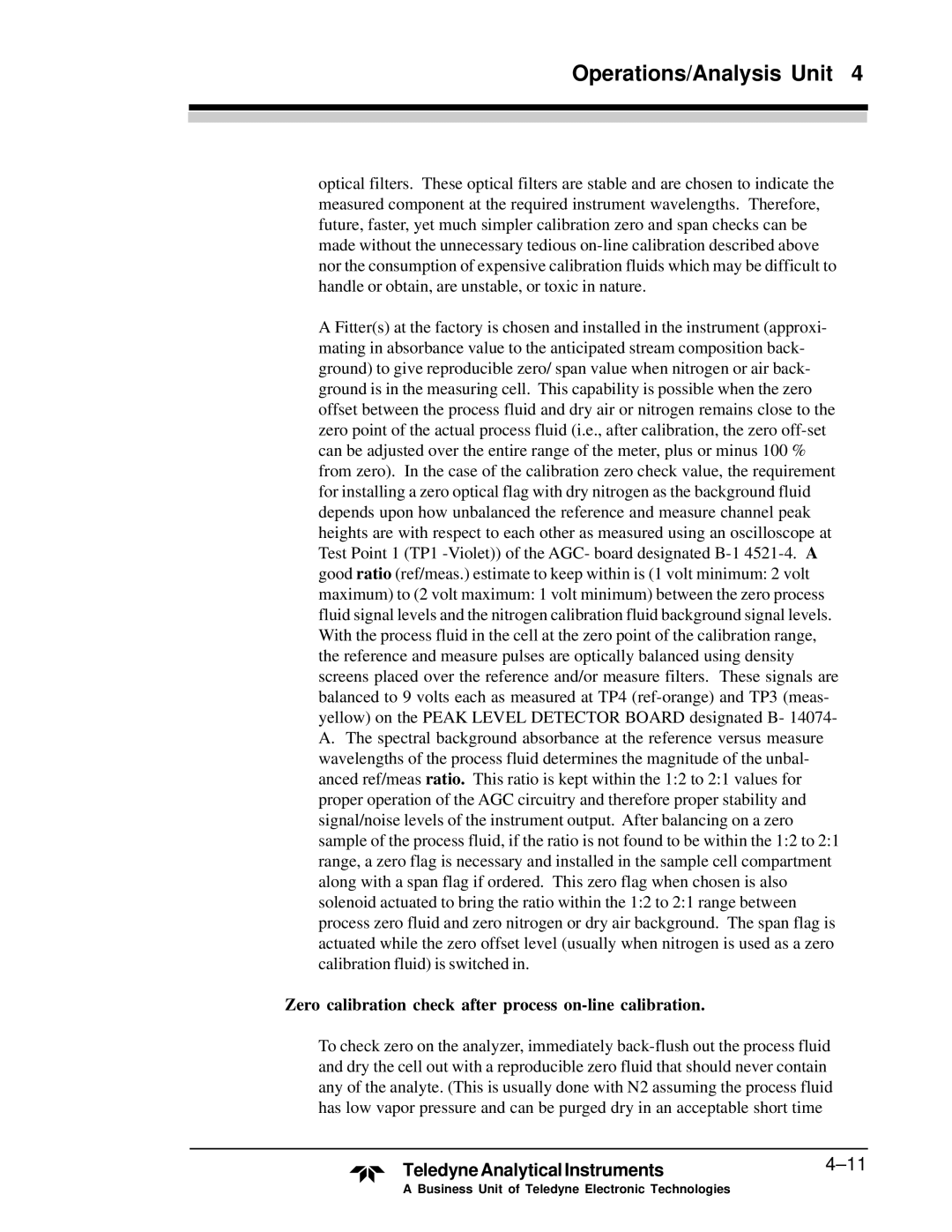
Operations/Analysis Unit 4
optical filters. These optical filters are stable and are chosen to indicate the measured component at the required instrument wavelengths. Therefore, future, faster, yet much simpler calibration zero and span checks can be made without the unnecessary tedious
A Fitter(s) at the factory is chosen and installed in the instrument (approxi- mating in absorbance value to the anticipated stream composition back- ground) to give reproducible zero/ span value when nitrogen or air back- ground is in the measuring cell. This capability is possible when the zero offset between the process fluid and dry air or nitrogen remains close to the zero point of the actual process fluid (i.e., after calibration, the zero
A.The spectral background absorbance at the reference versus measure wavelengths of the process fluid determines the magnitude of the unbal- anced ref/meas ratio. This ratio is kept within the 1:2 to 2:1 values for proper operation of the AGC circuitry and therefore proper stability and signal/noise levels of the instrument output. After balancing on a zero sample of the process fluid, if the ratio is not found to be within the 1:2 to 2:1 range, a zero flag is necessary and installed in the sample cell compartment along with a span flag if ordered. This zero flag when chosen is also solenoid actuated to bring the ratio within the 1:2 to 2:1 range between process zero fluid and zero nitrogen or dry air background. The span flag is actuated while the zero offset level (usually when nitrogen is used as a zero calibration fluid) is switched in.
Zero calibration check after process on-line calibration.
To check zero on the analyzer, immediately
TeledyneAnalyticalInstruments4–11
A Business Unit of Teledyne Electronic Technologies
